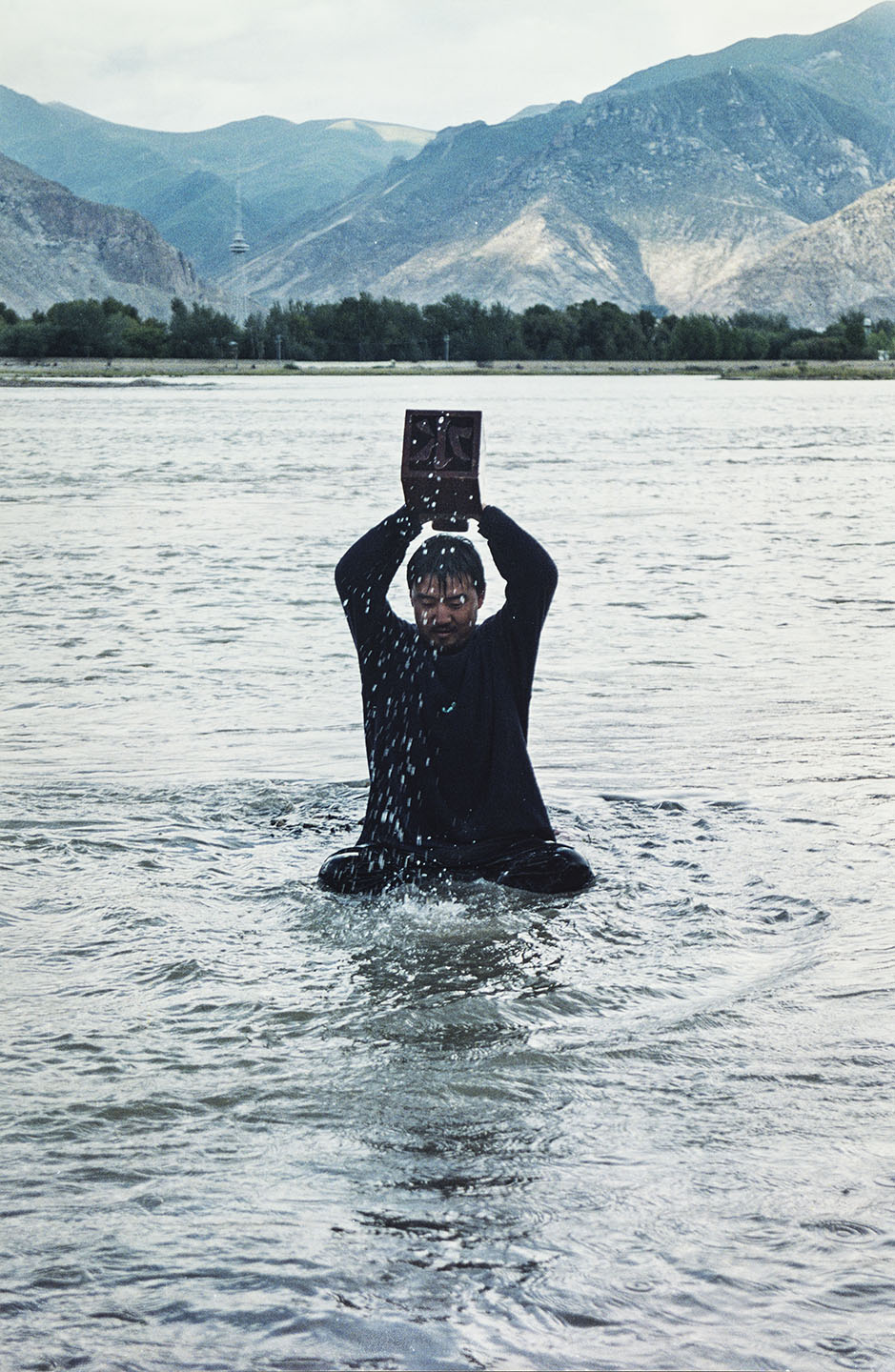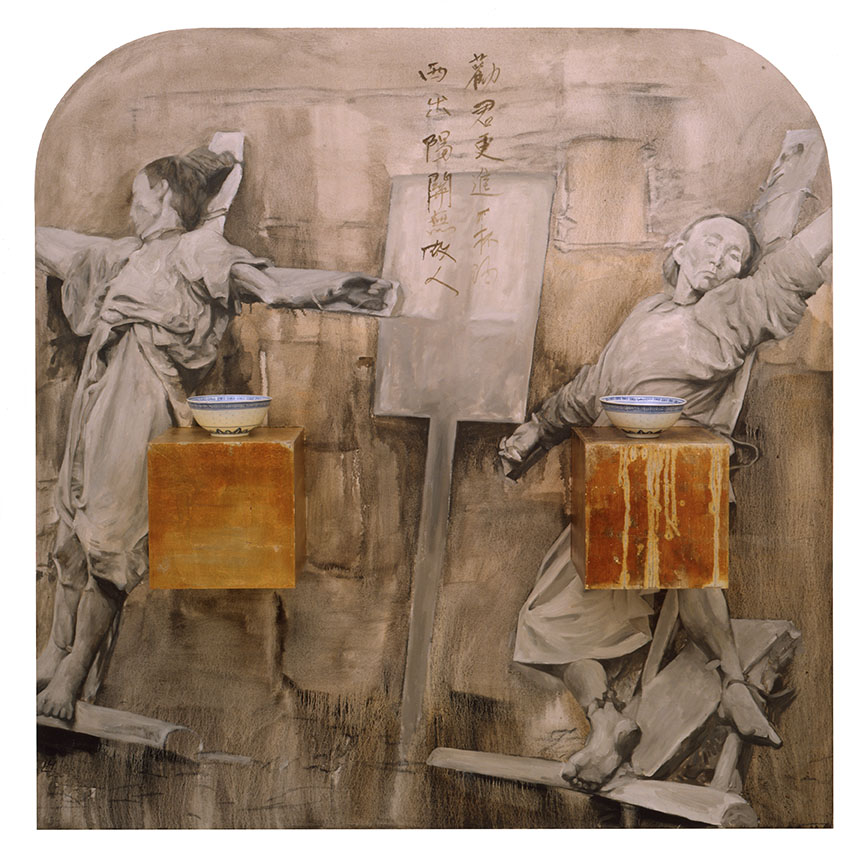TURN OF PHRASE: LANGUAGE AND TRANSLATION IN GLOBAL CONTEMPORARY ART
Bowdoin College Museum of Art Brunswick, ME Bowdoin.edu Through June 4, 2023
Many years ago, a trucker hat with a Jenny Holzer truism on it, “Protect Me From What I Want,” came into my possession. Donated to the local Ladies Aid Society the hat eventually found a new home atop the head of an elderly Maine islander, its pronouncement drawing smiles and questioning looks on the mailboat ride to Great Cranberry Island.
The pieces that make up “Turn of Phrase,” curator Sabrina Lin’s remarkable exhibition, use diverse means to deliver their messages. Some, like Barbara Kruger’s nine-piece photolithographic and silkscreen print Untitled (we will no longer be seen and not heard), 1985, aligns with Holzer’s direct messaging although the actual words combined with found images are rebus-like in their presentation. Kruger, too, wants to, as Lin puts it, call into question “what or who is not seen and or heard.”

In some cases, the viewer must turn to Lin’s comprehensive catalogue essay to uncover the textual element. One example is Song Dong’s Stamping the Water, 1996, which consists of 36 still photographs from the artist’s hour-long performance in the Lhasa River in Tibet. While we can appreciate the stop-action images of Song lifting and slamming something in the water, when Lin relates that the object is a large wooden block carved with the Chinese character for “water,” a whole other level of understanding and admiration takes place. The existentialism of the act redoubles, Sisyphean in its repetition.
Lin’s guidance also comes in handy while studying Yanagi Yukinori’s Loves Me, Loves Me Not, 1997, a large wool carpet on jute backing with a semé of brass chrysanthemum petals. The curator explains how the lines of woven text represent the title’s phrase in languages related to Japan’s former colonies and the country’s indigenous populations. A gift to the Bowdoin Museum from the Marion Boulton “Kippy” Stroud Foundation, the piece was created in collaboration with the Fabric Workshop in Philadelphia.
The most disturbing piece in the show is Hung Liu’s Western Pass, 1990. The artist borrowed the principal image from a photograph taken during the Boxer Rebellion by British botanist Ernest Henry “Chinese” Wilson (1876-1930) showing two female prisoners hung crucifix-like on crude wooden easels about to be executed. The calligraphic poem in the middle, by Wang Wei (699-761 AD), “sensitively humanizes” the figures, writes Lin, who provides the translation: “Wait till we empty one more cup [of wine]—West of Yang Gate there’ll be no old friends.”

Lorna Simpson’s Waterbearer, 1986, and H.S., 1992, deploy language in different but equally forceful ways. In the former, a Black female figure, photographed with her back turned, empties a pitcher and plastic carton of water. Below her in block letters we read, “She saw him disappear by the river, / they asked her to tell what happened, / only to discount her memory.”
The sense of subjugated knowledge in Waterbearer carries over into H.S., a pair of dye diffusion color Polaroids showing a headless Black female figure holding a high school yearbook open to spreads of student headshots. You need to look closely to read the words “subjugation” and “indoctrination” inscribed repeatedly on the Plexiglas overlay. The vertical piece, nearly 50 inches tall, brings to mind ancient Greek caryatids but in this case the woman holds up not a building but a piece of charged personal history.
“Like art,” Lin writes at the beginning of her catalogue essay, “language acts as witness to societies and cultures, and becomes a mirror through which we see and situate ourselves in relation to the world.” Her selection, which includes work by Marta María Pérez Bravo, William Kentridge, Glenn Ligon, Qiu Zhijie, Meleko Mokgosi, Shirin Neshat, Wang Tiande, Xu Bing, Luis Camnitzer, and Jeffrey Gibson, highlights a compelling line of visual/textual works that continues today (see, for example, the recent work of Chloë Bass). Thanks to Lin’s deft and intriguing assemblage, we come away with a more nuanced view of how word and image may lead us to new understanding of disparate worlds.
–Carl Little
